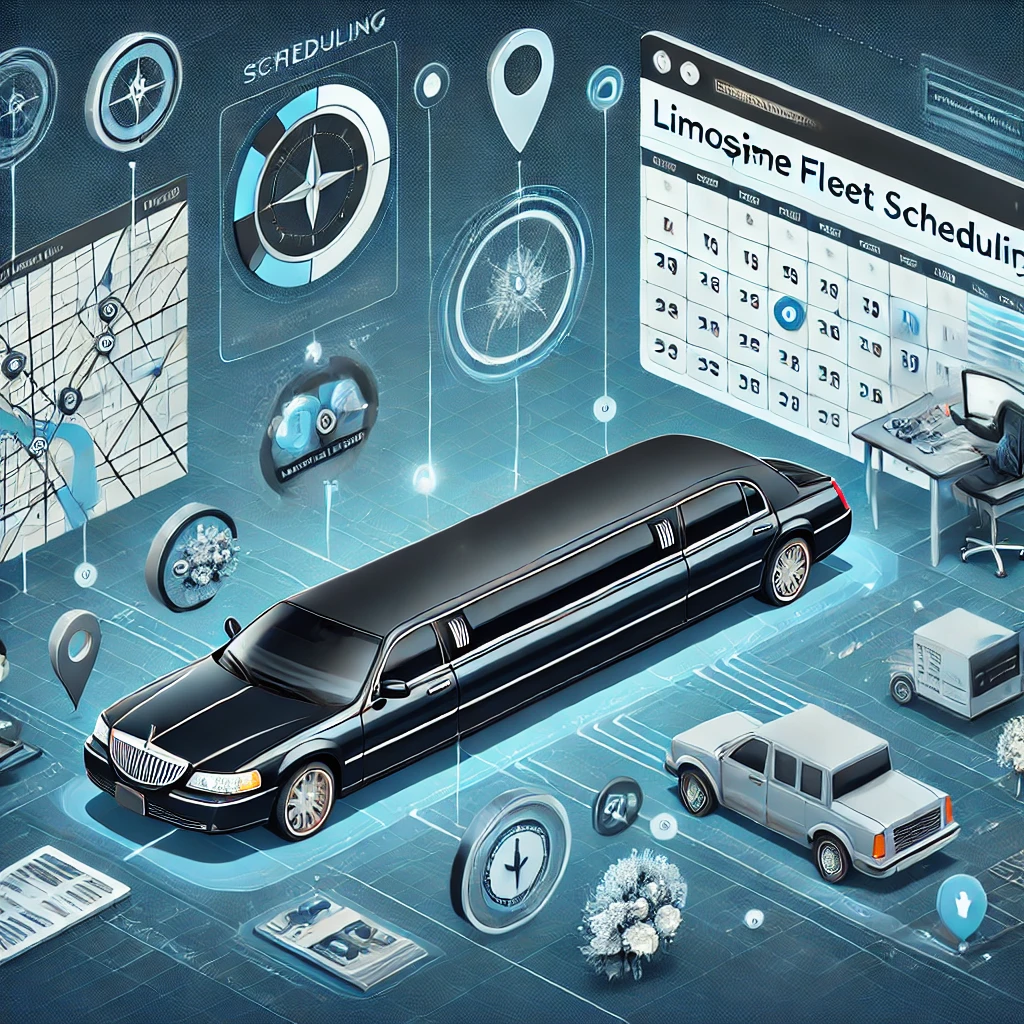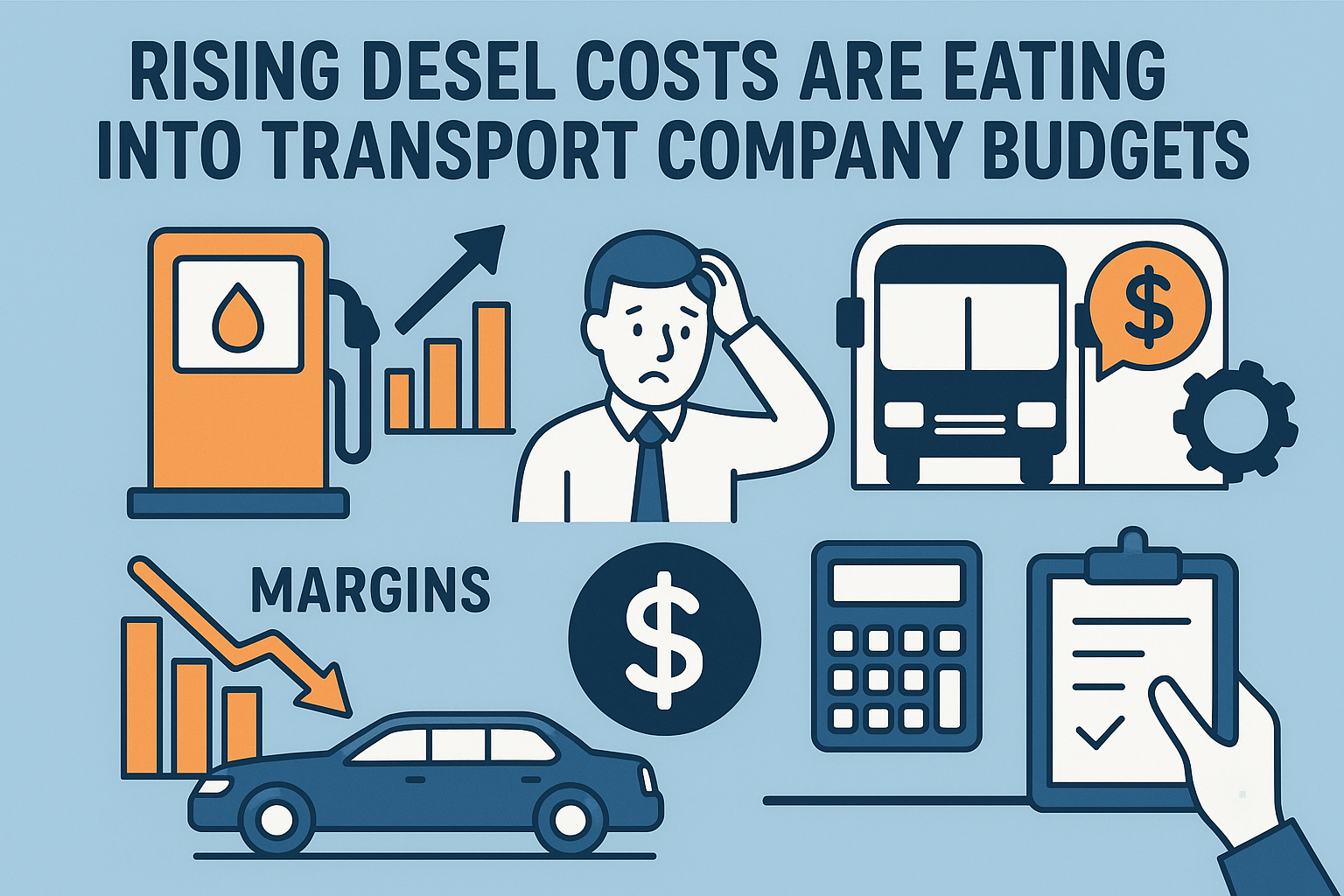Fleet scheduling can be complex and overwhelming, particularly for limousine services. Managing an efficient schedule means ensuring on-time services, reducing idle times, and optimizing routes to save costs. In this blog, we’ll discuss the key factors that impact limousine fleet scheduling efficiency, explore challenges, and provide actionable limousine fleet scheduling tips to ensure smooth operations.
1. Importance of Optimizing Fleet Scheduling
Efficient limousine fleet scheduling is the cornerstone of successful operations. It impacts customer satisfaction, operational costs, and overall productivity.
The Issue
Without a robust scheduling system, dispatch delays, missed appointments, and poor resource allocation can become everyday issues. Inconsistent scheduling often leads to customer dissatisfaction and can increase operational costs due to fuel wastage and inefficient routing.
Solutions
- Use Fleet Management Software:
Implementing advanced fleet management systems can automate scheduling tasks, reducing human errors. These tools can optimize routes, allocate vehicles appropriately, and adjust schedules in real-time. - Monitor Key Metrics:
Track important data like vehicle availability, driver schedules, and customer bookings. This allows proactive adjustments to scheduling and avoids last-minute complications. - Plan Ahead:
Proactively schedule based on demand trends. For example, weekends or special events often see higher demand. Advanced preparation helps in allocating the right resources without overbooking.
2. Balancing Customer Expectations with Operational Efficiency
Ensuring timely services while managing costs can be tricky for limousine operators.
The Issue
Customers expect punctuality and luxury, which sometimes clashes with the reality of tight schedules and unexpected delays. Meeting customer expectations while ensuring the fleet operates efficiently is a constant balancing act.
Solutions
- Prioritize High-Value Bookings:
Segment bookings based on value. Assign your best resources to high-value or loyal customers to maintain satisfaction. - Integrate GPS Tracking:
Real-time GPS tracking helps monitor vehicle movement, avoiding traffic delays and ensuring timely arrivals. - Communicate Transparently:
Inform customers in advance about potential delays. Transparency builds trust and can mitigate dissatisfaction when unexpected delays occur.
3. Reducing Idle Time
Idle time can increase fuel consumption and decrease overall productivity.
The Issue
Many limousine operators struggle with idle times due to inefficient scheduling or unplanned downtime. This results in higher operational costs and underutilized resources.
Solutions
- Dynamic Scheduling:
Adopt a flexible approach by reallocating vehicles and drivers dynamically based on real-time demand. - Consolidate Rides:
Where possible, group nearby bookings to minimize downtime between trips and maximize fleet usage. - Monitor Driver Behavior:
Train drivers to minimize unnecessary engine idling, saving on fuel and wear-and-tear costs.
4. Managing High-Demand Periods
Limousine services experience demand spikes during weekends, holidays, and events.
The Issue
High-demand periods often lead to overbookings or underprepared fleets. This creates operational bottlenecks and dissatisfied customers.
Solutions
- Analyze Historical Data:
Use historical booking data to predict demand surges and prepare accordingly. - Hire Additional Drivers Temporarily:
Partner with part-time or contract drivers during peak seasons to handle the excess workload. - Limit Overbooking:
Avoid taking excessive bookings beyond fleet capacity to maintain service quality.
5. Training Drivers for Scheduling Efficiency
Drivers are pivotal to successful fleet operations.
The Issue
Untrained drivers may not follow optimal routes, causing delays or escalating costs. Poor communication between drivers and dispatch teams can further exacerbate scheduling issues.
Solutions
- Offer Route Optimization Training:
Train drivers to use GPS effectively and follow the most efficient routes. - Enhance Communication Skills:
Foster seamless communication between drivers and dispatchers to quickly adapt to schedule changes. - Set Clear Expectations:
Establish guidelines for punctuality, route adherence, and customer interaction.
6. Utilizing Technology for Real-Time Adjustments
Modern technology can transform fleet scheduling.
The Issue
Many limousine services still rely on manual systems, leading to errors and inefficiencies.
Solutions
- Invest in Dispatch Software:
Advanced dispatch tools ensure accurate and real-time adjustments to bookings. - Leverage AI and Predictive Analytics:
Predictive analytics can forecast demand patterns, allowing for proactive scheduling. - Automate Notifications:
Notify drivers and customers automatically about schedule updates to streamline operations.
7. Handling Cancellations and Last-Minute Changes
Flexibility is critical for handling schedule disruptions.
The Issue
Cancellations and last-minute changes often lead to wasted time and resources.
Solutions
- Implement a Cancellation Policy:
A clear cancellation policy helps mitigate revenue loss. - Maintain Backup Plans:
Always have alternative drivers or vehicles ready to cover last-minute changes. - Encourage Early Bookings:
Offer incentives for customers to book early, reducing last-minute adjustments.
8. Reducing Fuel Costs Through Smart Scheduling
Fuel is one of the most significant operating expenses for limousine services.
The Issue
Poor route planning and excessive idling contribute to higher fuel consumption.
Solutions
- Optimize Routes Using Software:
Fleet management systems can provide the most fuel-efficient routes. - Encourage Eco-Driving Practices:
Train drivers in techniques like smooth acceleration and deceleration to conserve fuel. - Schedule Maintenance Regularly:
Well-maintained vehicles are more fuel-efficient, saving costs in the long run.
9. Improving Customer Communication
Communication plays a vital role in fleet scheduling.
The Issue
Miscommunication between customers and fleet operators can lead to scheduling conflicts and dissatisfaction.
Solutions
- Use Automated Messaging Systems:
Automated updates can keep customers informed about their bookings. - Provide a Mobile App:
A customer-facing app allows users to track their rides and manage bookings conveniently. - Train Staff for Customer Support:
Equip your team to handle queries efficiently and ensure a positive experience.
10. Regularly Reviewing and Refining Schedules
Continuous improvement is key to staying competitive.
The Issue
Sticking to outdated scheduling practices can hinder growth and efficiency.
Solutions
- Conduct Regular Audits:
Periodically review your scheduling process to identify gaps. - Solicit Customer Feedback:
Use customer input to refine your scheduling practices and meet expectations. - Stay Updated on Industry Trends:
Incorporate emerging technologies and practices to enhance your operations.
Conclusion
Efficient limousine fleet scheduling is essential for delivering superior service while controlling costs. By implementing these limousine fleet scheduling tips, you can optimize operations, improve customer satisfaction, and maximize resource utilization.
For seamless dispatch and customer support services, consider partnering with Saztech Solutions. Their cutting-edge technology ensures real-time fleet management and enhanced scheduling efficiency. Visit their website at https://www.saztech-solutions.com/ to learn more.
Home | About Us | Pricing | Get Started | FAQ | Dispatch Daily | Contact Us
WhatsApp | Facebook | LinkedIn





Leave a Reply